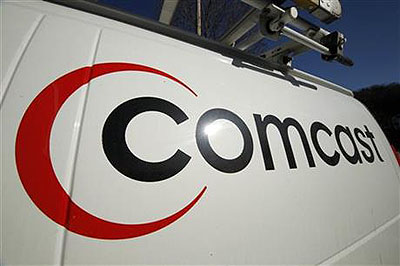Today the Senate Judiciary Committee heard testimony from Comcast and Time Warner executives about their extraordinarily controversial merger proposal. A recent poll found that 52 percent of respondents believed mergers like it lead to reduced competition and poorer service for consumers.
At today’s hearing, a number of the senators expressed concern about the deal which, if approved, would result in a single company serving slightly less than 30 percent of the US paid television market and up to 40 percent of American broadband subscribers. Chairman Leahy (D-Vt.) started the proceedings, saying that “thousands of Americans have flooded the FCC [Federal Communications Commission] in recent weeks with comments supporting the restoration of open-internet rules. Their voices on this issue should be heard.”
But Leahy and most of his colleagues have already “heard” from both Comcast and Time Warner—in the form of generous campaign contributions. Out of the committee’s 18 members, 15 have accepted donations from at least one of the two media giants since the 2010 election cycle; 12 have received money from both. The average contribution over that time: $16,285. Democrats were the biggest recipients, taking an average of $18,531 from the two cable and internet giants, nearly twice as much as their Republican counterparts. Here’s the breakdown:
| Senator | Comcast | Time Warner |
|---|---|---|
| Chris Coons (D-Del.) | $57,200 | $10,200 |
| Chuck Schumer (D-N.Y.) | $41,600 | $21,300 |
| Orin Hatch (R-Utah) | $36,750 | $6,000 |
| Amy Klobuchar (D-Minn.) | $28,373 | $23,575 |
| Patrick Leahy (D-Vt.) | $22,500 | $62,650 |
| Sheldon Whitehouse (D-R.I.) | $21,831 | $20,275 |
| Dick Durbin (D-Ill.) | $20,600 | $0 |
| Richard Blumenthal (D-Conn.) | $17,000 | $2,333 |
| Al Franken (D-Minn.) | $14,750 | $11,600 |
| Chuck Grassley (R-Iowa) | $13,000 | $4,000 |
| Diane Feinstein (D-Calif.) | $12,025 | $25,780 |
| Mazie Hirono (D-Hawaii) | $8,500 | $5,000 |
| Ted Cruz (R-Texas) | $7,500 | $0 |
| John Cornyn (R-Texas) | $6,000 | $3,500 |
| Lindsey Graham (R-S.C.) | $0 | $3,000 |
| Jeff Flake (R-Ariz.) | $0 | $0 |
| Mike Lee (R-Utah) | $0 | $0 |
| Jeff Sessions (R-Ala.) | $0 | $0 |
Source: Center for Responsive Politics













